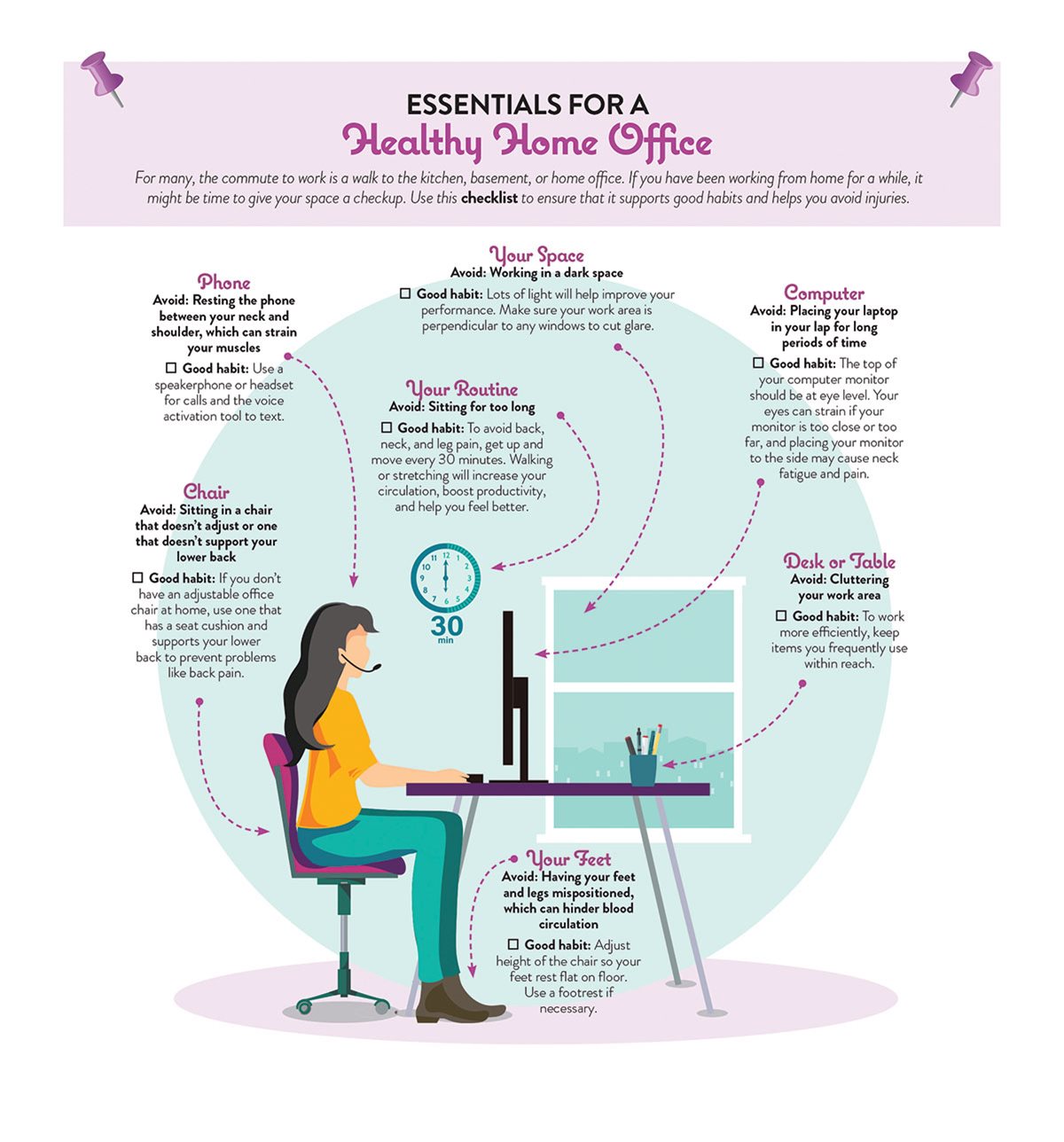If you are one of the many Americans now issued to work from home, your commute to the office likely dropped to only a few seconds. Or maybe you have always worked from home but have some new challenges sharing a workspace with a partner or child.
In any case, a new or updated work environment presents an opportunity. Take this time to examine your space and routines to ensure that they support good habits and help you avoid injury. The checklist below can help you get started.
Your Space
- Avoid: Working in a dark space
- Good habit: Lots of light will help improve your performance. Make sure your work area is perpendicular to any windows to cut glare. Use a desk lamp, too.
Desk or Table
- Avoid: Cluttering your work area
- Good habit: To work more efficiently, make sure items you frequently use are within reach, and items needed only occasionally are placed further away.
Computer
- Avoid: Placing your laptop in your lap for long periods of time
- Good habit: Put your computer on a flat surface with your monitor positioned directly in front of you at least 20 inches away. If needed, place your laptop on stacks of books to make sure the top of the monitor is at or below eye level. You can experience eyestrain if your monitor is too close or too far, and placing your monitor to the side may cause fatigue and pain in your neck muscles.
Chair
- Avoid: Sitting in a nonadjustable chair or one that does not support your lower back
- Good habit: If you do not have an adjustable office chair at home, use one that has a cushion on the seat and supports your lower back. You can roll a towel or blanket to place in your low-back area to prevent problems with back pain.
Phone
- Avoid: Resting the phone between your neck and shoulder, which can strain your muscles
- Good habit: Use speakerphone or a headset for calls and the voice activation tool to text.
Your Routine
- Avoid: Sitting for too long
- Good habit: To avoid back, neck, and leg pain, get up and move every 30 minutes. Stretching or walking will increase your circulation, boost productivity, and help you feel better.
Lunch and Snacks
- Avoid: Eating where you are working
- Good habit: Keep water nearby and drink it throughout the day. Having separate spaces to eat and work will help you stay focused on your tasks and make meals more enjoyable.
When it is time to get back to the office, put some of your new techniques to work for you.

Does Working From Home Have Your Back In a Pinch?
If back, neck, or leg pain is interfering with your life, it may be time to visit the Emerson Spine Program. With comprehensive expertise in diagnosing and treating spine-related problems, the majority of cases can be treated without surgery.
The most common reason people come for an evaluation is back pain, but spine-related problems can cause symptoms from head to toe, including:
- Numbness, tingling and weakness in the extremities
- Stiffness and decreased range of motion
- Headache
- Neck pain
- Arm pain and heaviness
- Leg pain and heaviness
- Buttock pain
- Scapular (shoulder blade) pain
- Generalized deconditioning
About the Emerson Spine Program
The Emerson Spine Program offers timely appointments, including evening and weekend hours. For more information or to schedule a consultation, call 978-287-3194 or visit emersonhospital.org/spineprogram.
Related Content

